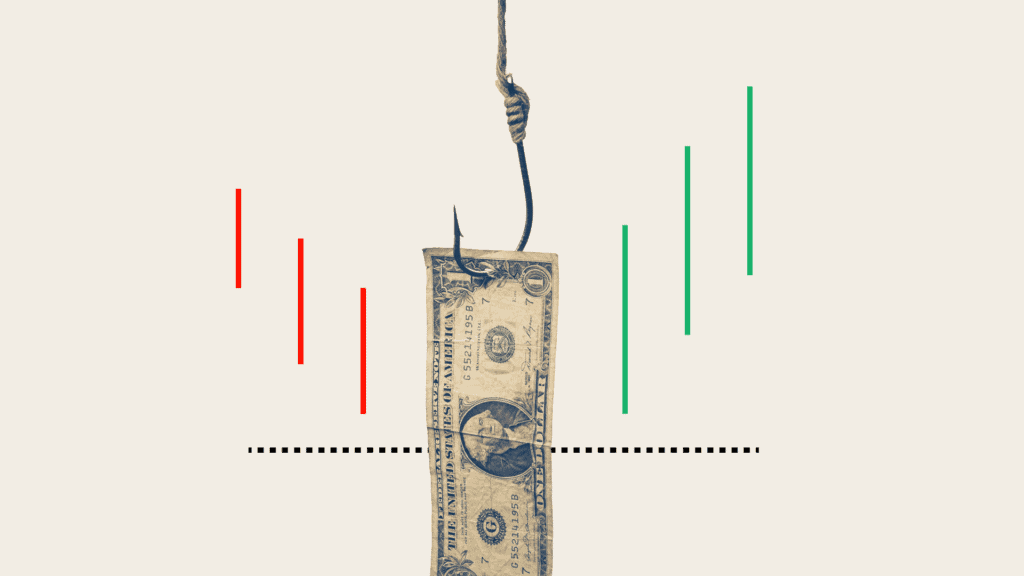Have you ever spotted a REIT trading at a huge discount and thought, “Is this a bargain—or a disaster waiting to happen?”
It’s a common dilemma. Distressed REITs can look tempting with low share prices and promises of high returns. But not every cheap REIT is a hidden gem. Some are value traps—investments that look good on the surface but are headed for long-term trouble. Knowing how to tell the difference is essential for protecting your portfolio and making smart investment decisions.
Introduction: When Distress Looks Like a Deal
REITs, or Real Estate Investment Trusts, are often praised for their steady income and potential for long-term growth. But even the best REITs can fall into distress—facing declining revenues, rising debt, or poor tenant retention.
When a REIT is in distress, its share price often drops significantly, and to many investors, that drop looks like a great opportunity to “buy low.“ In reality, however, not all discounted REITs are good investments. Some manage to recover and reward those who believe in them. Others continue to decline, dragging investor capital with them.
This distinction between a turnaround opportunity and a value trap is crucial—especially in Arab markets like Saudi Arabia, the UAE, and Egypt, where REIT markets are relatively young and still evolving. Let’s dive into how you can spot the difference before you invest.
What Is a Distressed REIT?
A distressed REIT is a company under pressure—financially, operationally, or both. It may be struggling with high debt, falling rental income, high vacancies, or even poor management decisions. The company’s financial stability might be at risk, making it difficult to pay dividends, maintain properties, or refinance loans.
In most cases, a distressed REIT’s stock trades at a discount to its net asset value (NAV). But just because it looks cheap doesn’t mean it’s a bargain. That’s where your analysis becomes important.
When Distress Becomes Opportunity
Sometimes, REITs go through short-term difficulties due to external factors—such as economic downturns, changing interest rates, or temporary market disruptions. In these cases, the core of the business may still be strong, and the REIT has a good chance of bouncing back.
A turnaround opportunity usually involves a REIT that owns valuable, income-generating properties in good locations. These assets might be under pressure due to the market cycle but still have long-term potential. For example, logistics centers serving e-commerce businesses in Dubai or high-traffic residential properties in Riyadh may see temporary dips but remain fundamentally solid.
Also, effective and transparent management is a positive sign. If leadership communicates their recovery strategy, shows a track record of responsible decisions, and maintains regular updates for investors, that builds confidence.
Some distressed REITs also benefit from temporary macroeconomic pressures. Think of hotel REITs during COVID-19: occupancy rates dropped due to travel restrictions, but demand recovered quickly in many areas once conditions normalized. If the main reason for the REIT’s troubles is external and expected to improve, the odds of recovery are much higher.
Liquidity also plays a role. A REIT that has access to cash—through reserves, financing options, or reasonable property sales—has more flexibility to weather tough times. When a REIT can manage its short-term obligations without panicking, it’s more likely to survive and rebound.
When Distress Turns Into a Value Trap

On the other side, value traps are REITs that appear cheap but are actually in deep trouble. Investors may be lured in by low share prices or high dividend yields, but those numbers can be misleading. Without fundamental strength, the REIT may continue to lose value.
One major issue is poor property quality. If a REIT owns old, unattractive, or poorly located buildings, it’s hard to retain tenants or attract new ones. This is especially true in rapidly modernizing Arab cities, where newer developments often outshine older assets. A REIT stuck with aging malls, outdated office spaces, or underdeveloped residential projects may have little hope for recovery.
Another danger is tenant concentration. If the REIT relies heavily on just one or two tenants, it becomes very vulnerable to unexpected changes. For instance, if one major tenant defaults or downsizes, the REIT’s income could take a major hit. This risk is magnified when those tenants are in struggling sectors, such as brick-and-mortar retail.
Then there’s the problem of mounting debt. Some REITs borrow heavily during growth phases, expecting continued rental income to cover their obligations. But if revenue drops and the REIT cannot refinance its loans, things spiral quickly. If the REIT begins selling valuable assets just to cover payments, long-term value is being sacrificed for short-term survival. That’s a clear warning that the REIT may be a value trap.
Lack of transparency is another red flag. If management avoids hard questions, delays reports, or issues with vague updates, it often signals internal problems. In healthy REITs, management is usually eager to maintain investor trust through clear communication and regular financial disclosures. A lack of openness usually means they don’t want investors to see what’s going on.
What Makes This More Complex in Arab REIT Markets
In the MENA region, where REITs are still emerging, the line between opportunity and trap can be harder to draw. There’s less analyst coverage, limited public data, and often thinner trading volumes.
This creates both risks and advantages. You might discover a high-potential REIT early—before larger institutions notice it. But you also face the danger of relying on incomplete information or exaggerated marketing claims.
For example, a REIT in Saudi Arabia might appear attractive because it owns commercial properties in a growing city. However, without clear tenant profiles, debt transparency, and occupancy data, the picture could be misleading.
In Egypt, where REIT regulations are newer, investors may have to do extra homework to understand the company’s structure, management, and market exposure.
In such markets, local knowledge becomes especially valuable. Understanding regional trends—like urban expansion, tourism shifts, or government development plans—can help you assess whether a REIT’s distress is temporary or terminal.
How to Tell the Difference: Turnaround vs. Value Trap
To separate a true opportunity from a trap, you’ll need to combine both financial and qualitative analysis.
Start by reviewing financial reports and investor presentations. Focus on cash flow, occupancy rates, debt structure, and dividend history. If the numbers show that the REIT can cover its obligations and still generate some profit, that’s a good start.
Next, evaluate the properties themselves. Are they in high-demand locations? Do they serve sectors that are growing or shrinking? A REIT invested in logistics or healthcare may have more resilience than one focused entirely on struggling retail centers.
Then look at how management is handling the situation. Are they addressing problems head-on? Are they transparent with investors? A REIT that openly discusses its recovery plan and follows through on it is more trustworthy than one that stays silent.
Also, assess the broader market environment. Is this REIT’s decline part of a wider trend, or is it an isolated case? If the whole sector is down but your REIT is still maintaining cash flow and strong tenant relationships, that may be a sign of strength hiding in plain sight.
Finally, don’t ignore investor sentiment. Sometimes, a REIT’s share price is pushed down more by fear than fact. If you do your homework and find that the REIT’s fundamentals are still intact, you may be looking at a hidden opportunity.
Case Study: Hypothetical Example
Let’s say there are two REITs in the Saudi market, both of which have dropped in price by over 30% during a tough year.
The first REIT owns logistics warehouses near Riyadh and Jeddah. Occupancy is still high, but profits are down slightly due to rising costs. Management communicates clearly, outlining a plan to renegotiate supplier contracts and refinance part of its debt. The dividend is temporarily reduced but not canceled. This REIT looks like a turnaround case: temporary pain, but long-term potential.
The second REIT owns aging shopping malls with falling foot traffic. It lost two major tenants in the past year and hasn’t replaced them. Occupancy has dropped, and rental income is down sharply. The REIT recently sold one mall to repay part of its debt, and the dividend has been suspended. Management hasn’t held a call with investors in six months. This looks more like a value trap—deeper structural problems with no clear recovery path.
Conclusion: Be Cautious, Be Curious
Investing in distressed REITs requires more than just spotting a low price. It demands careful analysis, patience, and the ability to see past short-term fear or hype.
Turnaround opportunities do exist—and for those who can identify them early, the rewards can be substantial. But value traps are just as real, and they can quietly erode your capital while appearing “cheap.”
In Arab markets especially, where REITs are still developing and transparency can vary, taking time to research and ask tough questions is your best protection.
Don’t be afraid of distress—but respect its complexity. Look beyond the numbers, understand the real estate, evaluate the leadership, and consider the broader market. When you do, you’ll be better prepared to spot the difference between a REIT worth betting on—and one to walk away from.










